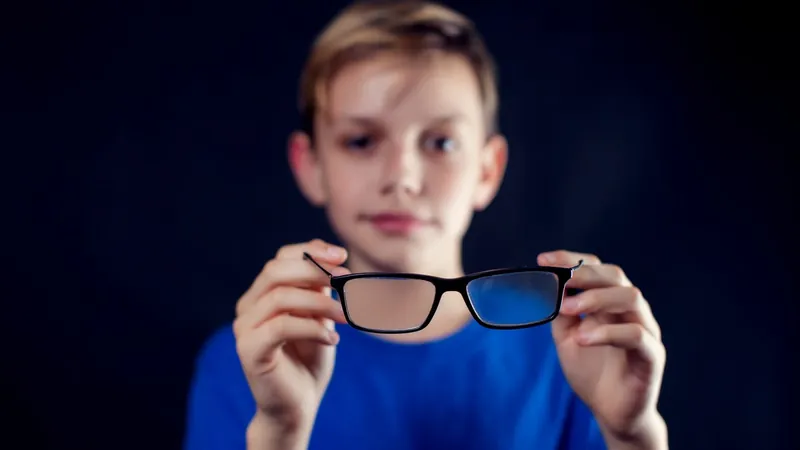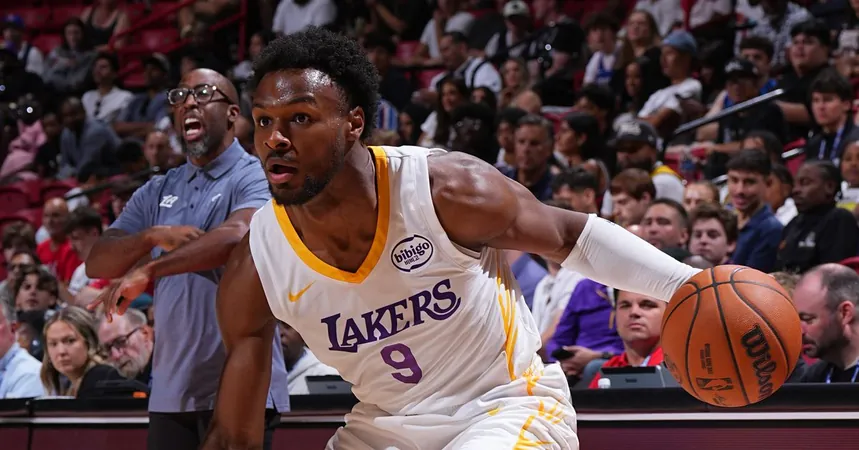
Is Your Child Struggling to See Far Away? Experts Warn: It’s Time to Take Myopia Seriously!
2024-09-20
Author: Yan
Are your kids squinting at the TV? You’re not alone—over 40% of Americans are grappling with myopia, commonly known as nearsightedness. While many view it as a minor inconvenience that can be easily fixed with glasses, a groundbreaking report released by the National Academies of Sciences, Engineering, and Medicine is urging health authorities to classify myopia as a disease that warrants urgent attention.
This report marks the first comprehensive analysis of myopia since 1989 and asserts that the condition has reached epidemic proportions. In fact, certain regions of the U.S. have seen myopia rates soar by as much as 25% in the past four decades, according to the American Optometric Association. “It’s about time we recognized the seriousness of this issue,” stated Dr. Terri Young, co-chair of the committee and a leading ophthalmology professor at the University of Wisconsin-Madison.
What is Myopia?
Myopia is not merely a phase kids go through; it’s a vision disorder where distant objects appear blurry while nearby items remain clear. This phenomenon happens when the shape of the eye causes light to focus in front of the retina instead of directly on it, thwarting clear vision. The retina, which converts light into signals for the brain, plays a critical role in how we perceive images, making it essential to address problems related to it early on.
Dr. Fatema Ghasia, a pediatric ophthalmologist at Cleveland Clinic, notes that myopia typically begins in childhood when, instead of correcting as kids grow, their eyes may grow too large, leading to this visual impairment. If current trends persist, more children will face this debilitating condition unless the country takes proactive steps for prevention and early diagnosis.
Why You Should Care:
The impacts of myopia extend beyond blurry vision; studies have shown a direct correlation between poor eyesight and reduced academic performance. “The ramifications for how a child functions in society are significant,” Dr. Young warns.
The Solution: Get Outside!
Experts recommend a simple yet effective remedy: outdoor time. The National Academies report suggests that children should spend at least one to two hours outdoors each day to combat the onset of myopia. “There’s something inherently beneficial about outdoor activities—gazing at long distances and soaking in different light conditions seizes myopic development,” Dr. Young explained.
On days when outdoor activity is challenging, allowing children to bask in natural light by being near windows can also provide some benefits. Sun or no sun, exposure to daylight is crucial.
Reevaluating Our Approach to Screenings:
Alarmingly, signs of myopia are manifesting in children at younger ages than ever before. The standard practice of screening often occurs later than it should; some children are only evaluated by second or third grade when they could be screened at wellness visits before they even enter school. Dr. Young found a significant “myopic shift” where the expectation of what constitutes good vision has changed dramatically—more children are being diagnosed with mild myopia early on.
An early diagnosis is essential; myopia isn’t just a pesky annoyance. It can lead to severe ocular issues later in life, such as retinal detachment and glaucoma. As Dr. Ghasia points out, “Myopia poses serious long-term repercussions; it’s far from trivial.”
Make no mistake—acting on this information is crucial for your child’s health and academic success. Keeping kids engaged outdoors and advocating for early eye screenings can be powerful preventive measures against this evolving epidemic. So, next time you see your kids huddled indoors with their screens, consider this—getting them outside might just help protect their vision for years to come!



 Brasil (PT)
Brasil (PT)
 Canada (EN)
Canada (EN)
 Chile (ES)
Chile (ES)
 Česko (CS)
Česko (CS)
 대한민국 (KO)
대한민국 (KO)
 España (ES)
España (ES)
 France (FR)
France (FR)
 Hong Kong (EN)
Hong Kong (EN)
 Italia (IT)
Italia (IT)
 日本 (JA)
日本 (JA)
 Magyarország (HU)
Magyarország (HU)
 Norge (NO)
Norge (NO)
 Polska (PL)
Polska (PL)
 Schweiz (DE)
Schweiz (DE)
 Singapore (EN)
Singapore (EN)
 Sverige (SV)
Sverige (SV)
 Suomi (FI)
Suomi (FI)
 Türkiye (TR)
Türkiye (TR)
 الإمارات العربية المتحدة (AR)
الإمارات العربية المتحدة (AR)